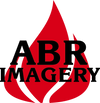Glass Fusing and Slumping consist of joining and/or molding glass in a kiln between 1,099 and 1,501 degrees Fahrenheit. We are going to talk about what Glass Slumping, and Tack and Full Fusing are, the temperature ranges needed, and make aware that we at ABR Imagery are here to help you reach your Glass working goals.
Slumping
Consists of heating the glass between 1,009 and 1,251 degrees Fahrenheit to allow the sheet to contour around on object or mold. The temperature is key in this technique which determines how much the glass will curve for the glass worker, the hotter the more elastic. There are two major approaches to slumping glass, Mold and Free Fall.
Mold Slumping: Glass is placed into a specifically made mold allowing the glass to slump via it’s own weight
Free Fall Slumping: Placed on a ring or other open shape, the glass falls through the opening which forms a bowl shape. Like with all slumping, the temperature is imperative determining the depth of the enclave.
Tack Fusing
This process consists of firing the glass between 1,251 and 1,350 degrees Fahrenheit. The premise is to join the two pieces while maintain original shapes. This process always requires a bit more knowledge on glass and heating principles, because there are many variants in glass especially when joining two distinctly separate pieces.
Full Fusing
This process consist of firing the glass between 1,350 and 1,501 degrees Fahrenheit to allow pieces to absorb together into a cohesive surface. Unlike Tack Fusing, Full Fusing will bring two pieces completely together creating very unique glass work
ABR Imagery has all the equipment you need to Fuse Glass. From Bullseye Sheet Glass in a large variety of colors and designs to the Kilns and their tools needed for the work.
We can help you!
Check out our soft glass category on our website
Or, Give us a Call at (812) 339-9147




















































